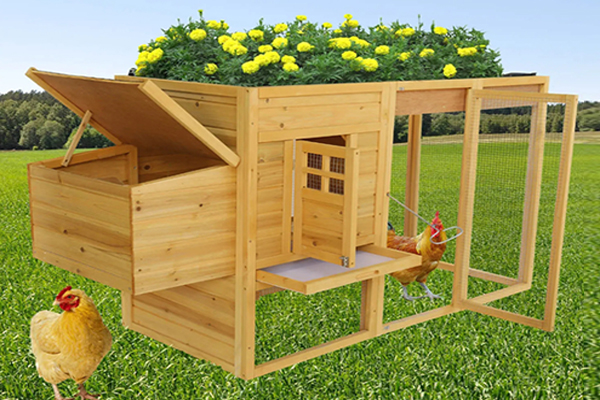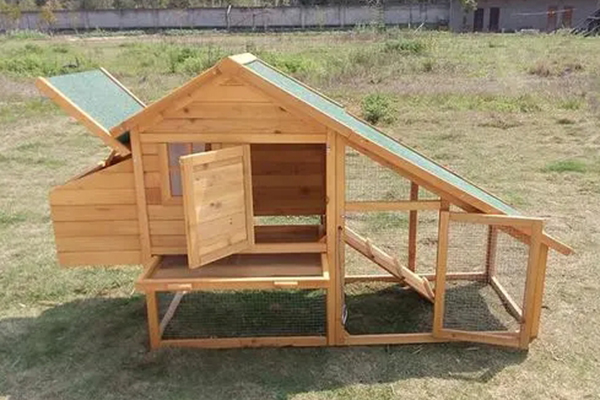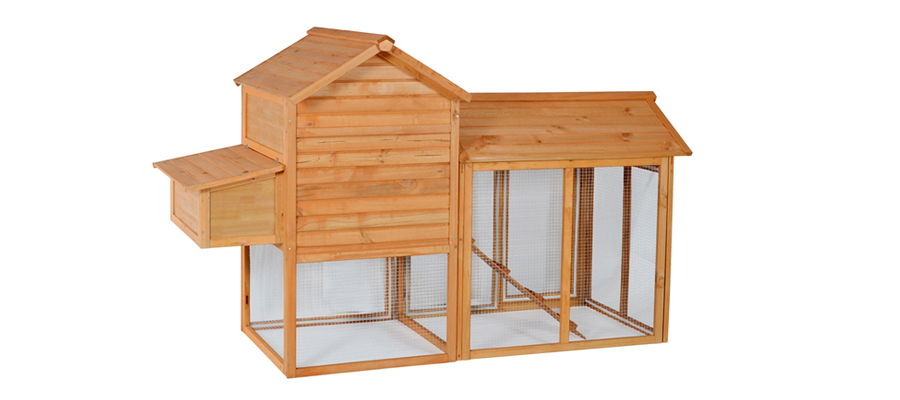Are you choosing a house for your chicken? When selecting an outdoor wooden chicken coop, there are several factors to consider to ensure it meets the needs of both you and your feathered friends.
Size Matters
The first step in choosing a chicken coop is determining the appropriate size. A general rule of thumb is to allow at least 3-4 square feet per bird inside the coop and 10 square feet per bird in the outdoor run. Consider the number of chickens you plan to keep and the space available in your yard.
Material and Construction
Wood is a popular choice for chicken coops due to its natural insulation and ease of construction. Look for untreated, chemical-free lumber to avoid potential health hazards for your chickens. The type of wood (e.g., cedar, redwood, or pine) can affect durability and resistance to rot and insects.
Ventilation and Airflo
Proper ventilation is crucial for maintaining a healthy environment inside the coop. Ensure there are enough vents or windows to allow for air circulation, reducing humidity and odors. However, avoid drafts that could cause your chickens to become cold.
Accessibility and Maintenance
Choose a coop design that makes cleaning and maintenance easy. Large doors or removable panels can simplify the process of accessing the interior for cleaning. Consider the materials used for the floor; some options like plastic or wire mesh can make waste management more straightforward.

Predator Protection
Chickens are susceptible to various predators, so your coop should be predator-proof. This includes secure latches on doors and windows, small enough gaps to prevent predators from entering, and a sturdy construction to withstand attempts to break in.
Nesting Boxes
Nesting boxes are an essential feature for egg-laying hens. The general guideline is to have at least one nesting box for every four to five hens. Ensure they are easily accessible for egg collection and comfortable for the chickens.
Roosting Bars
Chickens need a place to roost at night. Roosting bars should be placed at least 10 inches off the ground and spaced about 8-12 inches apart to prevent overcrowding.
Outdoor Run
An outdoor run provides chickens with space to roam, forage, and exercise. It should be secure and covered to protect from the elements and predators. The run should be at least half the size of the coop to give the chickens adequate space.

Location and Placement
Consider the location of the coop in your yard. It should have access to sunlight for natural warmth and be placed in an area that won’t disturb neighbors with noise or odor.
Customization and Aesthetics
While functionality is paramount, you can also consider the aesthetics of your chicken coop. Choose a design that complements your home and yard, and consider adding personal touches that reflect your style.
Conclusion
Selecting the right outdoor wooden chicken coop is an investment in the health and happiness of your chickens. By considering size, material, ventilation, accessibility, predator protection, nesting boxes, roosting bars, outdoor run, location, and aesthetics, you can create a comfortable and secure home for your backyard flock.
Additional Tips
- Always check local regulations regarding keeping chickens before purchasing a coop.
- Consider the coop’s portability if you plan to move it seasonally within your yard.
- Regular maintenance is key to a healthy coop environment.


